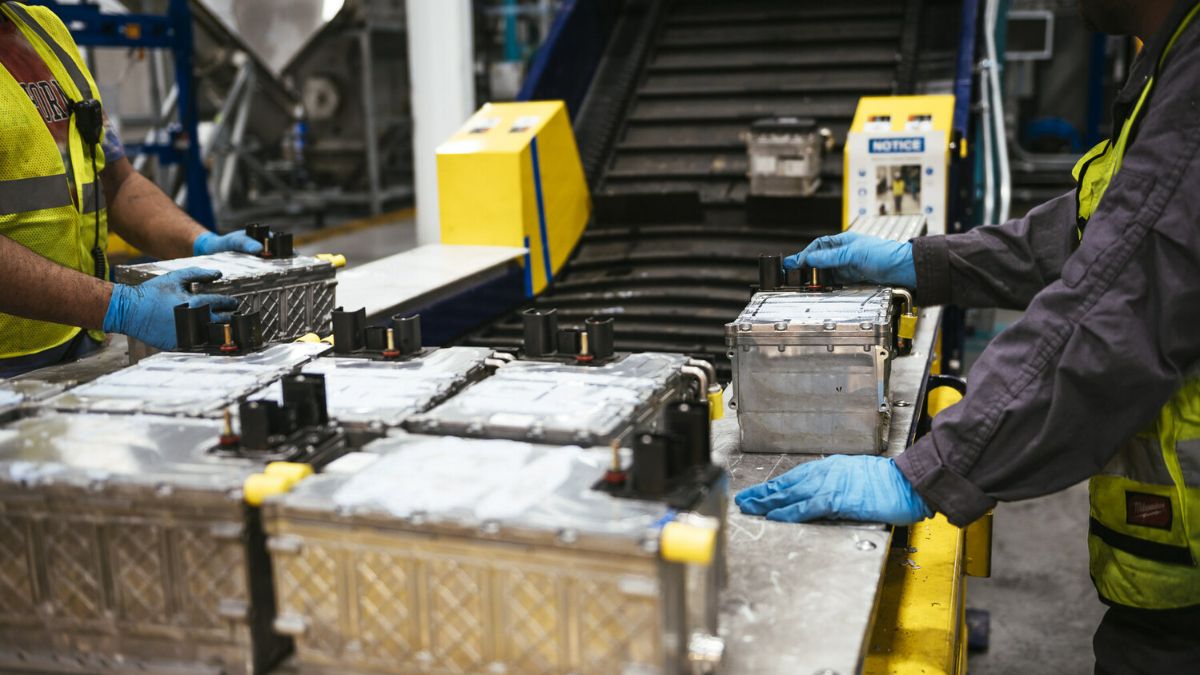In a major breakthrough, American Battery Technology Company (ABTC) revealed that its lithium-ion battery recycling facility is now constantly running at more than 115% of its intended capacity—highlighting the strength and reliability of its unique recycling technology.
Founded in 2011, ABTC began its mission with several mining claims in Nevada. Originating from the vision of a former Tesla employee aiming to provide lithium-ion batteries for electric vehicles, the company’s early direction showcased strategic insight.
Understanding the urgency of domestic supply for critical materials like lithium, cobalt, nickel, and manganese—vital for EVs and renewable energy storage—ABTC broadened its operations to include lithium-ion battery recycling alongside its work in primary battery metals.
Internally Developed Tech
The Nevada-based facility has marked strong progress in recycling capabilities. Housing both a pre-commercial plant and a commercial-scale unit ready for full-scale operations, the site reflects ABTC’s drive for technological advancement.
The company’s recent performance milestone further demonstrates the success of its facility, which has now exceeded its planned output levels.
“One of the key advantages of commercializing an internally developed technology is that the team members have a fundamental understanding of every unit operation within the processing train,” said Ryan Melsert, CEO of ABTC. “This allows them to be constantly evaluating the data and operating conditions from the facility in real-time and continuously enhancing the operations, both through incremental day-to-day as well as step-change disruptive improvements.”
ABTC’s system uses an innovative, first-of-its-kind integrated recycling method based on strategic de-manufacturing. The technology is designed to accept a wide array of battery sizes and chemistries.
The process begins with the extraction of materials like copper, aluminum, steel, and lithium and black mass intermediates. The second phase of the operation then converts these into refined, battery-grade materials: nickel sulfate, cobalt sulfate, manganese sulfate, and lithium hydroxide.
“Having in-house expertise is critical to our continued success and ability to rapidly advance our operations, and I am extremely proud of the tenacity, creativity, and collaboration demonstrated by our team every day,” said Andrés Meza, COO of ABTC. “Pushing this volume of material through a fully customized, large-scale, complex system is no easy feat, and I am extremely pleased with how smoothly the system is performing overall. Our reliability improvements are paying dividends, and we are now laser-focused on sustainable rate improvements, further operational expenditure reductions, and cost efficiencies through automation.”
Located in a previously unused 137,000-square-foot building that once recycled lead-acid batteries, ABTC found the ideal location for its lithium-ion facility.
Phase-two Recycling

Currently, the company is initiating the second phase of operations at the facility. This includes refining the lithium intermediate into battery-grade lithium hydroxide, and converting black mass materials into high-grade nickel, cobalt, manganese, and lithium hydroxide.
ABTC’s in-house R&D and engineering units—comprising talent with Tesla Gigafactory experience—have helped reduce risk and fast-track the rollout of this technology.
After years of refining its proprietary recycling techniques, ABTC has earned notable accolades. These include winning the BASF Circularity Challenge in the battery recycling category and receiving a U.S. Advanced Battery Consortium (USABC) grant involving the DOE, GM, Ford, and Stellantis.
The firm is also progressing under a U.S. Department of Energy grant to improve next-gen battery recycling with better material recovery and lower costs.
Further strengthening its growth, ABTC has secured over $60 million in tax credits through the 48C Qualifying Advanced Energy Project Credits program. These credits will help fund both the second phase of the current Nevada plant and a future large-scale recycling facility aimed at serving new suppliers.
“We’re incredibly proud of this team who have taken ownership of the success of this facility as we move to 24/7 operations,” concluded Melsert.
Looking for some real progress in clean energy innovation? Head to our website for more updates like this one.
Disclaimer: The information presented in this news article is for informational purposes only and is based on official statements and publicly available data at the time of publication. The publisher does not guarantee the accuracy or completeness of the content and is not responsible for any actions taken based on the information provided. Readers are advised to verify facts independently before making any business or investment decisions.
